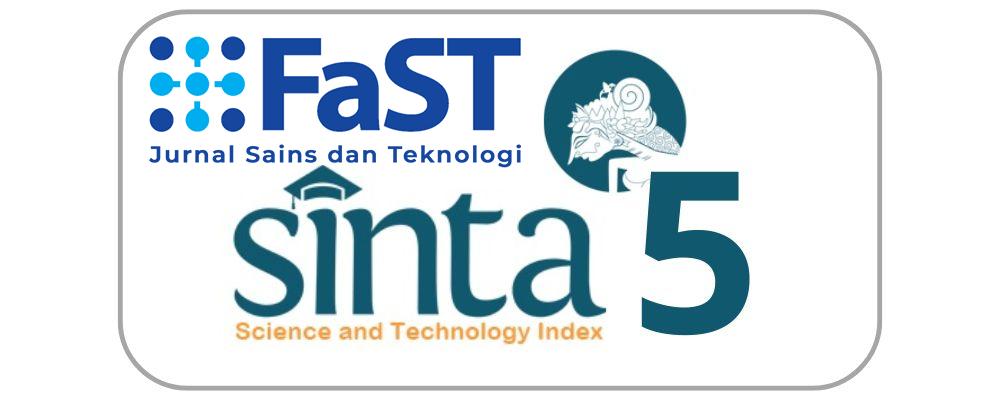KADAR PROTEIN DAN TANIN NASI SORGUM (Sorghum bicolor (L.) Moench) DENGAN PENAMBAHAN KACANG TUNGGAK (Vigna unguiculata) [PROTEIN AND TANNIN CONTENTS OF SORGHUM (Sorghum bicolor (L.) Moench) RICE WITH ADDITION OF COWPEA (Vigna unguiculata)]
Keywords:
cowpea, germination, protein, sorghum rice, tanninAbstract
Sorghum is the fifth most important cereal and is a staple food for people living in semiarid tropical regions such as Africa, Asia and Latin America. Sorghum contains nutrients that are equivalent to rice so it can be used as rice and become a staple food for Indonesian people, but sorghum has a low protein quality due to its low lysine content and contains antinutrients, tannins, so it is necessary to do several ways to improve the quality of sorghum protein. The addition of cowpea aims to increase the level of rice sorghum lysine, while germination is done to reduce the level of sorghum rice tannins. The purpose of this study was to determine the protein content and levels of sorghum rice tannin with the addition of cowpea. The results showed that the addition of cowpea caused increased levels of tannin and rice sorghum protein, while germination could reduce tannin levels and increase the protein content of sorghum rice.
ABSTRAK
Sorgum adalah serealia terpenting kelima dan merupakan makanan pokok bagi masyarakat yang tinggal di daerah tropis semi kering seperti Afrika, Asia dan Amerika Latin. Sorgum mengandung nutrisi yang setara dengan beras sehingga dapat dimanfaatkan sebagai nasi dan menjadi makanan pokok masyarakat Indonesia, namun sorgum memiliki kualitas
protein yang rendah karena kandungan lisin yang rendah dan mengandung zat antinutrisi yaitu tanin, sehingga perlu dilakukan beberapa cara untuk meningkatkan kualitas protein sorgum. Penambahan kacang tunggak bertujuan untuk meningkatkan kadar lisin nasi sorgum,
sedangkan perkecambahan dilakukan untuk mengurangi kadar tanin nasi sorgum. Tujuan penelitian ini adalah untuk mengetahui kadar protein dan kadar tanin nasi sorgum dengan penambahan kacang tunggak. Hasil penelitian menunjukkan bahwa penambahan kacang tunggak menyebabkan meningkatnya kadar tanin dan protein nasi sorgum, sedangkan perkecambahan dapat menurunkan kadar tanin dan meningkatkan kadar protein nasi sorgum.
Kata kunci: Kacang tunggak, nasi sorgum, perkecambahan, protein, tanin
References
Association of Official Analytical Chemist (AOAC). 1990. Official Methods of Analysis of The Association of Official Agricultural Chemists. Washington: AOAC, Inc. Dewar, J. 2015. Influence of malting on sorghum protein quality. South Africa: University of Pretoria. Direktorat Gizi Departemen Kesehatan Republik Indonesia. 1992. Daftar Komposisi Bahan Makanan. Jakarta: Bhatara. Food and Agriculture Organization (FAO). 1999. Sorghum: Post-harvest Operations. Downloaded from http:www.fao.org/fileadmin/user_upload/inpho/docs/Post_Harvest_Compendium_-_SORGHUM.pdf on 27/7/2018 Gwanzura, T., Ng’ambi, J. W. and Norris, D. 2012. Nutrient composition and tannin contents of forage sorghum, grown in limpopo province of south africa. Asian Journal of Animal Sciences 6 (5) : 256-262 Michadejhoun, M.L., Joseph, H.D. and Christian, D.M. 2005. Physical, chemical and microbiological change during natural fermentation of gowe a spourted or non spourted sorghum beverage from west africa. African Journal of Biotechnology 4 (6) : 476496. Ogbonna, A.C., Abuajah, C.I., Ide, E.O., dan Udofia, U.S. 2012. Effect of malting conditions on the nutritional and antinutritional factors on sorghum grist. Food Technology 36(2) : 64-72. Ojha, P., Adhikari, R., Karki, R., Mishra, A., Subedi, U., dan Karki, T.B. 2017. Malting and fermentation effects on antinutritional components and functional characteristics of sorghum flour. Food Science an Nutrition 6 (1): 47-53. Pelembe, L.A.M., Erasmus, C. dan Taylor, J.R.N. 2002. Development of a protein rich composite sorghum-cowpea instant porridge by extrusion cooking process. Lebensm.-Wiss. u.-Technol 35 (2) : 120-127. Reed, J.D. 1995. Nutritional toxicology of tannins and related polyphenols in forage legumes. Journal of animal Science 73 (5) : 1516-1528. Sukamto, 1992. Perubahan Komposisi Nitrogen dan Fosfat Serta Aktivitas Antigizi Selama berkecambahan Biji Kedelai. Jurusan Teknologi Hasil Pertanian, Yogyakarta: Universita Gajah Mada, Tesis Program Pascasarjana. Supriyatna, Moelyono, M.W., Iskandar,Y. dan Febriyanti, R.M. 2014. Prinsip Obat Herbal: Sebuah pengantar untuk Fitoterapi. Yogyakarta: Deepublish. Downloaded from http:books.google.co.id on 2/8/2018. Taylor, J.R.N. 2005. Overview: Importance of Sorghum in Africa. South Africa: University of Pretoria. United States Department of Agriculture (USDA). 2009. Food Composition Database. Downloaded from http:ndb.nal.usda.gov/ndb/search/list on 27/7/2018. World Health Organization (WHO). 1998. Complementary feeding of young children in developing countries. A review of current scientific knowledge, Geneva. pp: 133-134.
Downloads
Published
Issue
Section
License
“Authors who publish with this journal agree to the following terms:
1) Authors retain copyright and grant the journal right of first publication with the work simultaneously licensed under a Creative Commons Attribution License (CC-BY-SA 4.0) that allows others to share the work with an acknowledgement of the work's authorship and initial publication in this journal.
2) Authors are able to enter into separate, additional contractual arrangements for the non-exclusive distribution of the journal's published version of the work (e.g., post it to an institutional repository or publish it in a book), with an acknowledgement of its initial publication in this journal.
3) Authors are permitted and encouraged to post their work online (e.g., in institutional repositories or on their website). The final published PDF should be used and bibliographic details that credit the publication in this journal should be included.”





